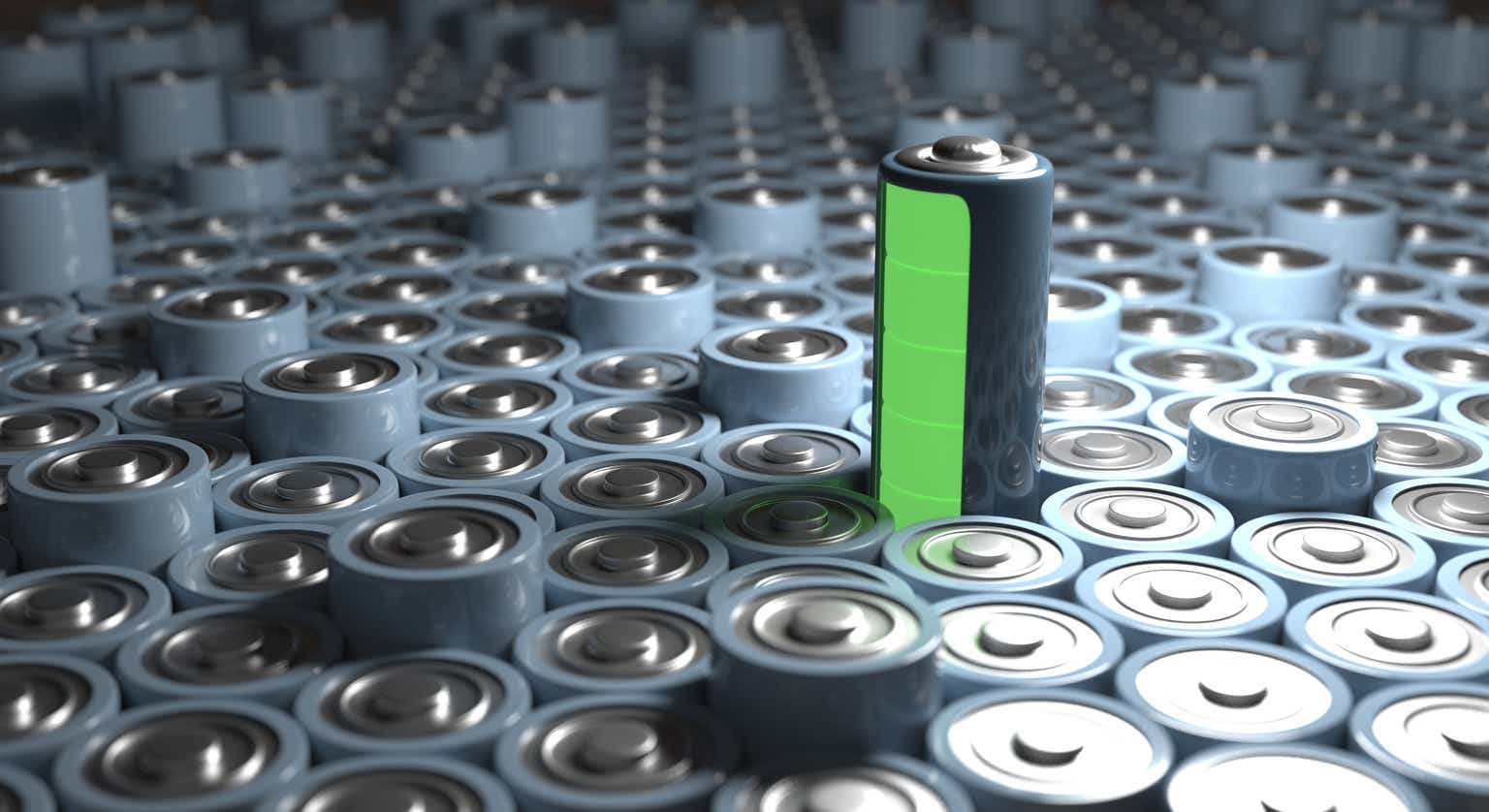When Energizer Holdings, Inc. (NYSE:ENR) announced its intention to acquire the battery business of Spectrum Brands (SPB) in 2018, the company was setting up to create a battery giant. Greater market power and costs synergies should in theory create a stronger business, yet lack of growth and a 5 times leverage ratio created real reasons to be concerned as well.
Fast forwarding five years in time, it is evident that stagnation is the name of the game here, making me very cautious to get involved, despite the optics of a low adjusted earnings multiple.
Some Perspective
Early in 2018, Energizer announced a $2.0 billion cash deal to acquire Spectrum’s battery and portable lighting business, including brands like Varta and Rayovac. Typical products included alkaline, carbon zinc and rechargeable batteries. The deal came amidst arguably fair valuation multiples, contributing $866 million in sales and $169 million in adjusted EBITDA, for a near 12 times EBITDA multiple.
The company believed that costs synergies, to the tune of $80-$100 million, were achievable, making the multiples look a lot more compelling.
This was a sizeable deal, as the own company generated about $1.7 billion in sales at the time, creating a pro forma business generating over $2.5 billion in sales, and being solidly profitable.
With 62 million shares trading at $51 ahead of the deal announcement, which took a long time to close for regulatory reasons, the company commanded a $3.2 billion equity valuation, and $3.9 billion enterprise valuation ahead of the deal with Spectrum Brands. Shares actually jumped on the announcement, even as pro forma EBITDA of $650 million resulted in a leverage ratio of about 5 times. Leverage concerns were outdone by potential for earnings to rise towards $5 per share, upon the realization of synergies.
Turning South
Fast forwarding between 2018 and the fall of last year, we see that Energizer grew its 2023 sales to $2.96 billion, comfortably above the pro forma implications at the time of the deal announcement in 2018. In the meantime, the company furthermore announced another deal with Spectrum Brands, acquiring the global auto care business in a $1.25 billion deal.
That said, 2023 sales were down 3% to $2.96 billion, as GAAP earnings were reported at $140 million, equal to $1.94 per share, as the comparison to the GAAP numbers in 2022 is not meaningful as that year was impacted by a huge amortization charge. On an adjusted basis, the company posted earnings of $3.09 per share, up a penny from the year before, with the gap between GAAP earnings largely due to restructuring costs, as well as the settlement loss on pensions.
Adjusted EBITDA was reported at $597 million, actually below the pro forma numbers seen in 2018, as the company has seen continued margin pressure over time. Net debt was reported at $3.1 billion and has not really come down at all, mostly amidst modest share buybacks, but moreover substantial dividends being paid out.
Moreover, there is no quick avail in sight. 2024 sales are seen between flattish at best, to down by low single digits. Despite the anticipated fall in sales, the company sees EBITDA improve in a modest fashion to $600-$620 million, driven by cost savings, as the company sees adjusted earnings between $3.10 and $3.30 per share.
Another Shortfall
Alongside the release of the full year 2024 outlook, the company indicated that first quarter sales for 2024 are seen down 6-8% on an organic basis, with adjusted earnings seen at just $0.50-$0.60 per share.
In February, Energizer posted first quarter results for the fiscal year 2024. Reported sales were down 6.3% to $716 million and change, with organic sales declines seen in excess of 7%. This had a detrimental impact on the bottom line, with GAAP earnings of nearly $2 million translating into earnings of mere 3 pennies. The company posted adjusted earnings of $0.59 per share, mostly relating to restructuring changes and charges related to the Argentina economic reforms.
The company reiterated the full year guidance, as the company is stepping up its cost savings targets. This is desperately needed as net debt of $3.1 billion is stable, still resulting in an over 5 times leverage ratio. This comes in part as the company keeps paying out dividends at a rate of $0.30 per share, for a current dividend yield in excess of 4% at $28 per share.
And Now?
Trading at just 9 times earnings, Energizer looks very cheap, but there are some real caveats to this statement. For starters, is the fact that organic growth is negative, as more and more devices are chargeable themselves. Furthermore, the earnings multiples are based on adjusted earnings, with lots of costs being excluded for, including recurring expenses like restructuring costs, often involving cash outflows as well.
The other is the capital structure, as net debt (at nominal terms) exceeds the market value by a billion dollars, as the leverage overhang is key and real, as the company has made no inroads since the deals of 2018. Fortunately, the debt load is for the vast majority fixed in terms of rates, with no major maturities due before 2027, and blended rates seen below 5%. There is another negative news event, as Energizer is facing a class action lawsuit, as it allegedly kept battery prices high.
Amidst all this, my sentiment for Energizer Holdings, Inc. remains very poor, as buying a cheap adjusted earnings multiple enough is not enough, as earnings are very adjusted, growth is not seen and the leverage overhang is evident. Amidst all this, ENR shares do not look very expensive, but cheapness in isolation hardly ever is a great argument to buy the dip.
Read the full article here


